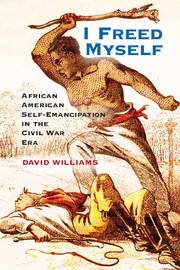5 - “All We Ask Is Justice”
Continuing Struggles for Freedom
Published online by Cambridge University Press: 05 July 2014
Summary
Demanding Absolute Legal Equality
In post–Civil War America, the struggle for freedom went on much as it always had among people of African descent. Chattel slavery was gone, but its trappings remained in the form of black codes, convict labor, tenancy, segregation, political suppression, and violence. Black resistance had helped bring on the Civil War and had made it a war against slavery. Now, largely by their own efforts, blacks were at least nominally free. But freedom was not simply the absence of slavery, as northern blacks had known for years. The freedom war would continue long after the Union war was won.
Seizing what momentum they could, black folk quickly took the offensive. The Reverend Henry Highland Garnet, himself born in slavery, helped set the tone. In celebration of the House of Representatives passing the Thirteenth Amendment and sending it to the states for ratification, the House chaplain invited Garnet to deliver a commemorative sermon. He would be the first African American to speak in the halls of Congress.
- Type
- Chapter
- Information
- I Freed MyselfAfrican American Self-Emancipation in the Civil War Era, pp. 208 - 244Publisher: Cambridge University PressPrint publication year: 2014



